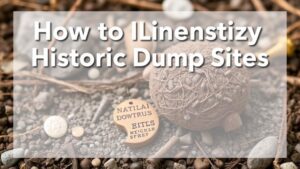Unearthing Coins and Relics Along Early Postal Routes
Unearthing Coins and Relics Along Early Postal Routes
The exploration of early postal routes reveals a rich tapestry of history intertwined with the daily lives of those who used these vital channels of communication. As postal networks expanded in the 17th and 18th centuries, they not only facilitated the exchange of letters but also served as pathways for commerce and interaction, leading to the deposition of various coins and relics along these routes. This article delves into the significance of these artifacts, the methods used to uncover them, and their historical implications.
The Historical Context of Early Postal Routes
Early postal routes were essential for the establishment of reliable communication systems within emerging nations. For example, the establishment of the British postal system in 1635 marked a turning point in communication, facilitating the dissemination of information and goods. These routes were often defined by their proximity to trade roads and were utilized by various travelers, including merchants, messengers, and the military.
As these postal networks evolved, they became focal points of economic activity. Historical records indicate that areas surrounding these routes were populated with taverns, inns, and marketplaces, making them key sites for the exchange of not only letters but also currency and goods. As a result, coins and other artifacts have been deposited in these regions over time, serving as valuable relics for modern archaeologists.
The search for coins and relics along early postal routes employs various archaeological techniques, combining fieldwork with advanced technology. Common methodologies include:
- Metal Detecting: This is one of the most popular techniques for finding coins. Metal detectors can effectively locate iron, bronze, and copper artifacts buried under the soil along postal routes.
- Excavation: Archaeologists may choose to excavate specific sites based on historical documentation or prior finds. Careful stratigraphy allows for the preservation of context, which is critical for understanding the significance of the finds.
- Surface Survey: Systematic walking of areas known for early postal activity can yield surface finds. This approach allows researchers to gather data without intrusive excavation.
The combination of these techniques enhances the chances of uncovering important artifacts. For example, a site excavated along the historic stagecoach route in the United States revealed an assortment of coins from the early 19th century, offering insights into the economic conditions of that time.
Insights Gained from Artifacts
The coins and relics uncovered along early postal routes hold immense historical value. For example, the presence of specific coins, such as British pennies or early American dollars, can indicate trade relationships and economic practices of the time. These artifacts help delineate regional variations in currency circulation and contribute to our understanding of socio-economic conditions.
In some cases, smaller relics–such as buttons, buckles, or personal items–have been found alongside coins, providing an intimate glimpse into the lives of individuals who traveled these routes. For example, the discovery of a personal letter near a roadside in England, combined with contemporary coins, allowed researchers to reconstruct a narrative about the life of its author, offering both a personal and a broader socio-historical context.
Case Studies
Numerous case studies exemplify the significance of findings along early postal routes. One notable instance is the unearthing of a trove of coins near the historic postal road in Pennsylvania, dating back to the late 1700s. These coins, ranging from Spanish reales to early American mintages, provided insights into the multicultural economy that existed in the region during the American Revolution.
Another powerful example comes from Britain, where excavations along the main thoroughfares used by horse-drawn mail coaches uncovered an array of 18th-century artifacts, including coins, horse gear, and everyday items. Analysts were able to use these finds to shed light on trade networks and the daily interactions of travelers, effectively weaving a narrative of life along these bustling routes.
Challenges and Considerations
Despite the insights that can be gained, the excavation of coins and relics along early postal routes poses certain challenges. Modern development often disrupts ancient sites, and environmental factors can affect the preservation of delicate artifacts. Also, legal and ethical considerations surround the excavation and ownership of found artifacts, raising important questions about provenance and cultural heritage.
For example, treasure-hunting enthusiasts must be aware of local archaeological laws that govern the collection and ownership of historically significant finds. Engaging with professional archaeologists and institutions can ensure that excavations are conducted responsibly and that artifacts are preserved for future generations.
Actionable Takeaways
Unearthing coins and relics along early postal routes is a fascinating intersection of history and archaeology. For those interested in exploration or research in this area, consider the following actions:
- Research local postal histories to identify potential routes with historical significance.
- Engage with archaeological societies that focus on local history and archaeological methods.
- Use metal detecting responsibly and in accordance with local laws to uncover potential sites.
To wrap up, the study of coins and relics along early postal routes provides rich insights into the cultural and economic contexts of the past. By deploying appropriate methodologies and maintaining a responsible approach, both amateurs and professionals can contribute to the understanding of our shared history.


